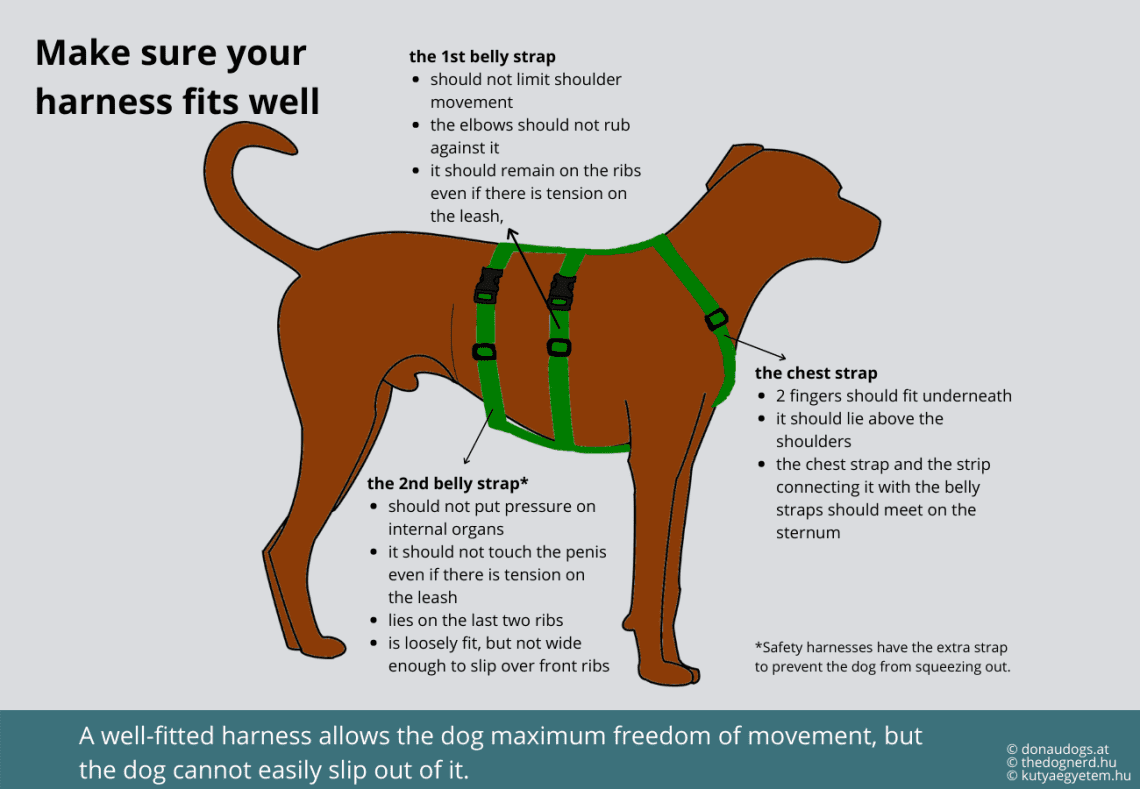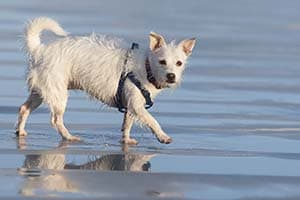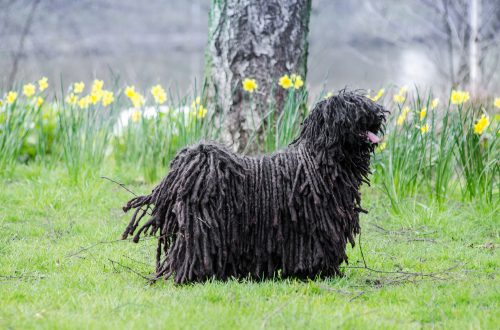
Choosing a harness for dogs
Whether it’s your first time getting a dog and you need to train your puppy, or you’re an experienced owner who wants to make walking easier, finding a good harness can be a daunting task. The nine features below will help you choose the perfect harness for great walks with your pet.
Contents
1. Proper fastening.
Narrow your choices by deciding how you want to attach the leash to the harness. VetStreet reminds you that there are two main types – front-mounted and rear-mounted. The choice depends on the dog.
Front tie, back tie, or just a leash?
A front-mounted harness allows for better control of behavior, but may not always keep an aggressive dog out. It is also braided under the front legs. The harness with a back fastening is very convenient to use when putting on and to protect the pet’s neck. Unlike a front-attached harness, this type of harness limits control over the dog’s trajectory. However, for training purposes, any harness is better than a leash, because when you lead a dog, it is important that you do not harm his neck. If the dog has already been trained, it may not need additional correction of the trajectory, and the leash will help ensure the movement of the dog next to you. Are you not sure what is best for your dog? Ask your veterinarian who will explain all the options and help you choose the right one.
If and when you use a harness, remember that side bindings are becoming more common in training as they provide gentle and consistent trajectory control. A harness with a leash attached in the middle on the dog’s back helps to tame your pet and thus have better control over a conventional leash, but puts extra strain on you.

2. Measurements.
In the case of a harness with both front and rear attachment, you must first measure its thickness. Measure your dog and determine the optimal thickness and size, taking into account the age and breed of the pet. Constantly monitor the fit of the harness, especially in young dogs, as they quickly grow out of a model that was perfect just a few days ago.
3. Is lining necessary?
Lined harness prevents friction and skin irritation in shorthaired dogs. A lined harness also looks more stylish, as does your dog wearing it, so you’ll want to walk your pet more often.
4. Meet your needs.
One of the best ways to find the perfect harness is to visit a pet store where you can try on different models before you buy. In most stores, the dog can be distracted in a variety of ways, so this is a great environment to try on a harness and see if it can hold onto your pet. In addition, your pet will love trying on different models, and you can easily explore all the necessary options.
5. Durability.
It is important to evaluate how much the harness stretches and adjusts when your pet moves. Once you have the harness on, adjust it and pay attention to your dog’s reactions and movements as you lead him. Also pay attention to what the harness is made of: if it is made of cheap material, then, most likely, over time it will begin to wear out and tear.
6. Reflector.
If you walk your dog early in the morning or late at night, it is worth investing in a harness with a reflective element to ensure the safety of you and your pet, as you will be visible to any driver.
7. Perfect fit.
Each owner has a favorite leash and collar for certain walks – make sure the harness fits him. You may need to change the length of the leash based on how much control you can have over the harnessed dog.
8. Several dogs.
If you walk a lot of dogs, you will need a harness to which you can attach several leashes. Some owners purchase one harness with a left attachment and another with a right attachment, and one “U” shaped leash for walking two dogs of the same size on the same leash. And others may have one large and one small dog, so you have to choose different harnesses, vests and leashes in accordance with the habits of pets.
9. Material.
While some types of harnesses provide better control and your dog will avoid muddy areas, harnesses still need to be washed and cleaned from time to time, especially lined harnesses. Some wearers like leather products because of the tactile sensation after polishing it. A leather harness is less likely to irritate your pet’s skin since you can handle it constantly. Others prefer nylon harnesses because they can be washed quickly and easily. You can choose the ideal material based on the size of the dog, the presence of allergies and the condition of the skin.
Consider your needs and the needs of your dog
After evaluating the above qualities of a harness, see what you like and fit your style. Do you dress in the latest fashion and want something colorful and bright? Or are you more practical and want to find a harness that fits your dog and won’t get dirty quickly?
After choosing the perfect harness for your dog, be sure to provide him with a complete diet for an active lifestyle. If you want to continue using the harness as your dog gets older, make sure your dog has healthy and strong joints. Also avoid injuries and long distances when walking. If you notice that your pet is walking slowly or is uncomfortable, check with your veterinarian and choose a new food or harness so that your dog can enjoy walking with you.





